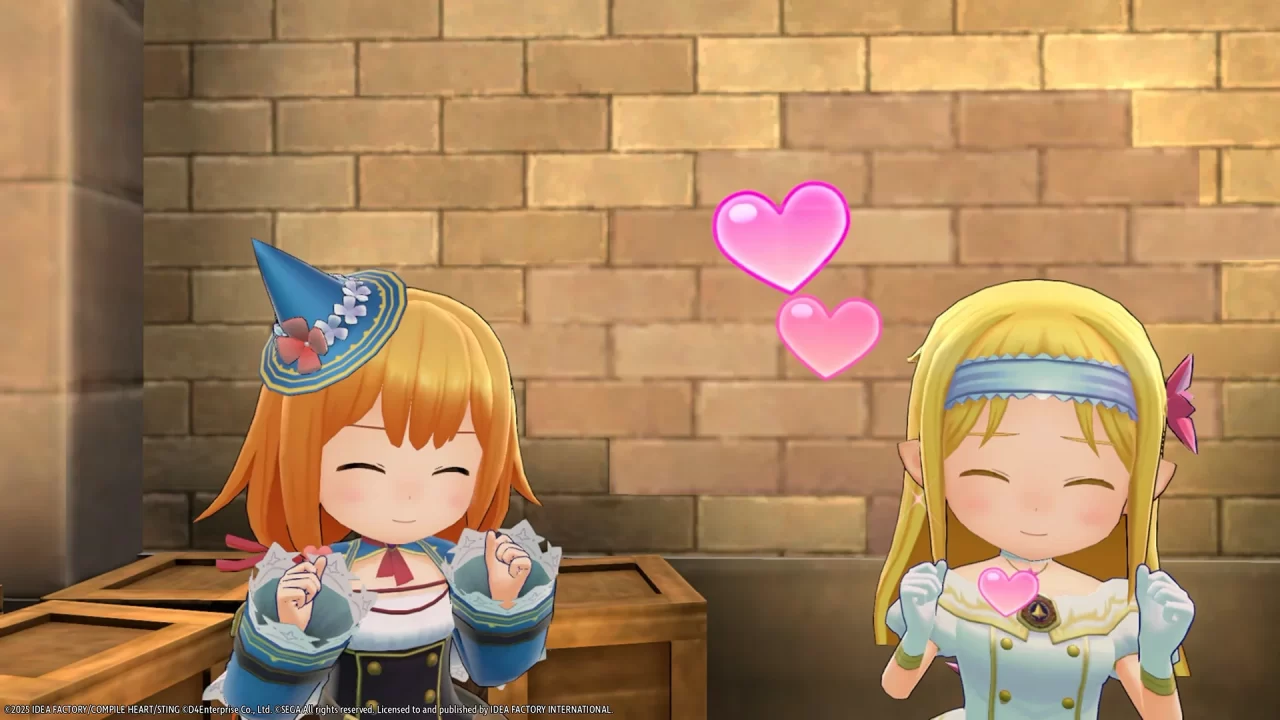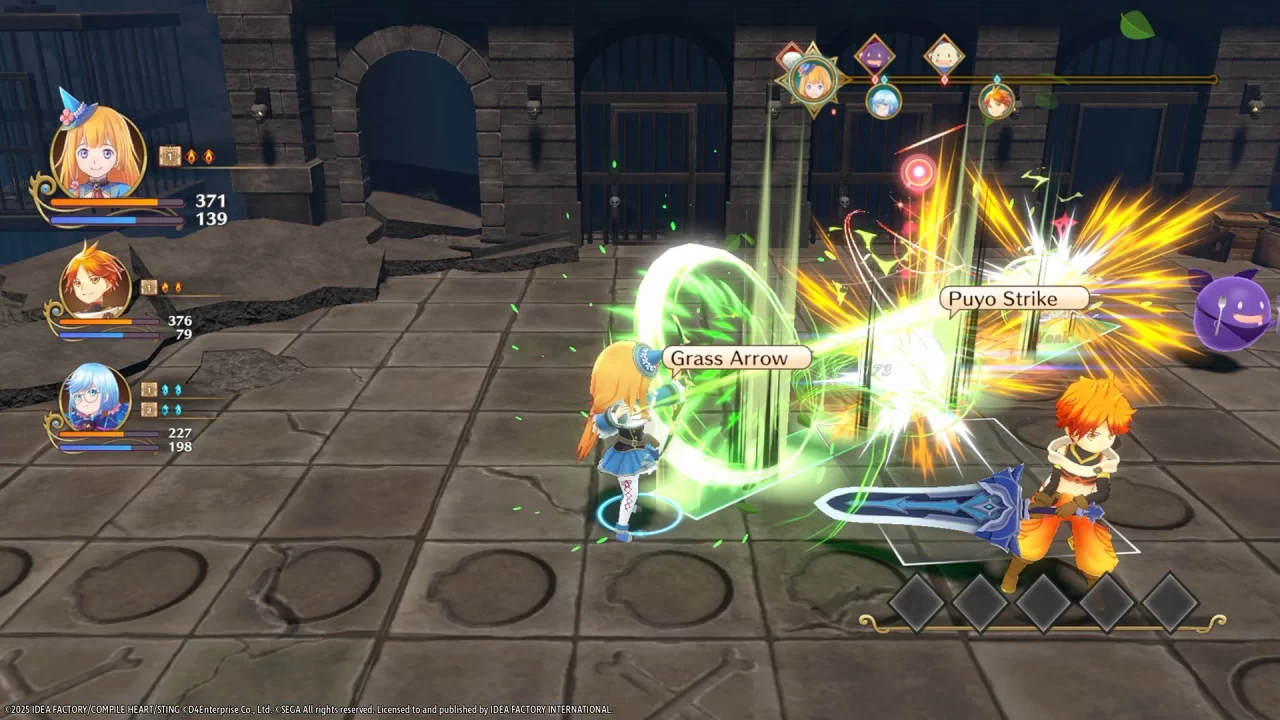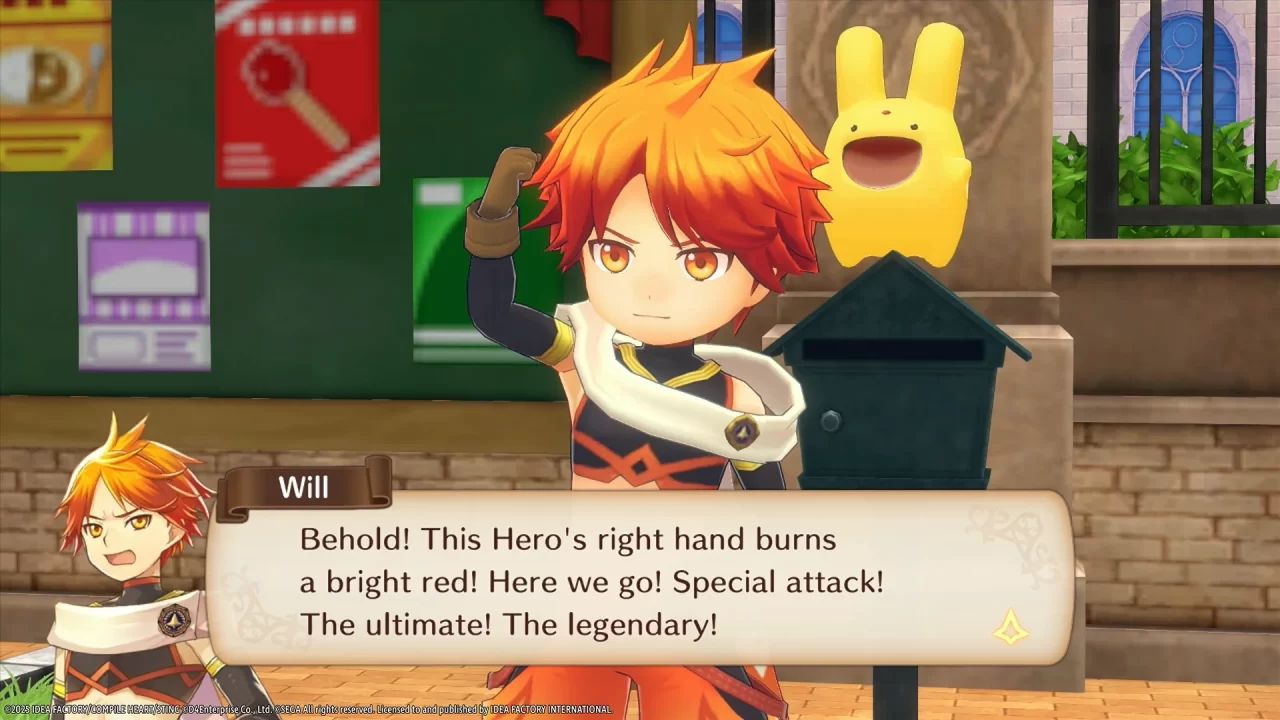If you’ve seen anything about the new Idea Factory title, Mado Monogatari: Fia and the Wondrous Academy, and you’re wondering whether that name sounds familiar, then you are my kind of gamer. Because, frankly, that was my immediate thought as well. It required a brief history lesson, and I have to say, it was worthwhile. And, given that this particular game takes place inside an academy, we may as well start with a little history lecture.
History
Mado Monogatari was first released on the MSX computer system in 1989 by developer Compile. You play as a young wizard in training named Arle Nadja, who managed to pass a written exam despite being only six years old, and must now take on the practical portion of the exam: scaling a labyrinthine tower filled with monsters. The gameplay features random encounters with turn-based combat and exploration in a first-person perspective similar to the first Phantasy Star. Elements of The Tower of Druaga and Wizardry seem to have influenced this game heavily at the time.
This dungeon crawler achieved moderate success and saw ports, sequels, and spin-offs for the NEC PC-98, Super Famicom, and even Sega Saturn. All of these games stayed Japan-exclusive, even as a puzzle series spin-off based on the Mado Monogatari‘s cast of characters and monsters (Puyo Puyo) had some entries localized.
The series developer, Compile, went bankrupt in the early 2000s. Much of Compile’s key staff and many of its IPs (such as Mado Monogatari) reformed as a subsidiary under Idea Factory called Compile Heart. That’s right, the folks behind Agarest, Neptunia, and more have connections to a classic RPG franchise. Said franchise reared its head again in the form of Sei Mado Monogatari in 2013. And guess what? This is actually the first time the series had an English localization! In doing so, they dropped the romaji title and called it Sorcery Saga: Curse of the Great Curry God. This spiritual successor revamped the formula of the early series, now a top-down, roguelike title (tiles, simple maps, like a Chunsoft Mystery Dungeon title). The game met with middling reception, and I’d personally forgotten about it… until now.
ELA
Idea Factory International decided to stick with the Mado Monogatari moniker for its English language release in this case! So here we are, with the second release in the long-running franchise to find its way stateside. Mado Monogatari: Fia and the Wondrous Academy tells the story of a young woman named Fia who goes to the Magic Artes academy. Fia befriends four other students who act as the other characters in the party: sword-wielding wannabe hero Will, bookish and snobby Leena, mysterious and money-hungry Totto, and the lovestruck Eska. Yes, there is something Sapphic going on in this cute story, even if it appears to be one-sided. After a combat trial early in the game, Eska falls head over heels for Fia. Her being a kind of magical demi-human known as a Dragonewt results in some strange social and cultural dynamics, and her devotion to Fia is just one of them.
The antics between the five students and their professors at the academy make up the majority of the game’s dialogue. The introductory hour was painful to slog through, but once you’re up to speed on how the game works and what story the developers are trying to tell, the story itself is fun and leisurely, even if it’s a bit too trope-heavy. Do not expect much in the way of depth or surprises that you couldn’t predict a mile away. But, for what the story is? I can’t complain. Hardcore fans may also notice an implied connection between the original games starring Arle Nadja and the characters of this generation.
And for those of us in the classroom experiencing eye strain, good news: the font size is ideal, even for those of us with smaller televisions, or playing handheld on a Switch. Maybe it’s just my own eyesight that is the problem, but tiny text is becoming more and more frequent in gaming. Being able to actually read the words on the screen without issue was a blessing.
Now you may be asking: what exactly happens over the course of Fia and the Wondrous Academy? Glad you asked!
STEM
The new Mado Monogatari sticks to its dungeon-crawling roots, even taking a page from the PS Vita Sorcery Saga entry to incorporate a few roguelike elements. Alongside the starting/tutorial dungeon “The Mage’s Tower,” about a dozen other dungeons become accessible throughout the course of the game. Each has a maximum floor level, unique visuals, hazards, specific monster encounters, and item drops. The floors of each dungeon are randomly generated, typically a series of rooms and hallways similar to typical roguelikes. However, combat does not take place in the dungeon, and your character is not moving on fixed tiles. Monsters that appear in the dungeon start a separate combat scenario upon contact, within a circular combat arena.
And here’s where I have some mixed feelings.
The combat in Mado Monogatari: Fia and the Wondrous Academy is complicated. Movement in the circle occurs in real-time, and basic physical attacks can occur at will. All other actions (Magic Artes, weapon skills, even items) depend on what is essentially an ATB bar. Your attacks come in a variety of basic shapes (areas of effect) on this condensed field, while healing tends to be auto-targeted to the party. Your party consists of three characters: always Fia, plus two of the other four characters. However, you only control Fia; the other characters operate based on one of a handful of command settings (“all-out attack,” “support and healing,” “target who I target,” etc).
Systems and mechanics pile on top of one another in a bit of a convoluted mess. On top of everything I’ve already described, there is the five-element system, special attacks (using a match-three system, a nod to Puyo Puyo), equipment synthesis, fishing minigames, and cooking. Sometimes, as I look at everything that went into building this game, I feel like I’m staring at a “design by committee” monstrosity. And, when I notice that Compile Heart, Idea Factory, and Sting (how I long for more Dept. Heaven games) are all credited as developers, it’s no wonder!
However things came to be, the overall flow and gameplay loop of “accept quest, climb tower, fight enemies, survive, fight boss, return to base, prepare for next quest” works well. I attribute much of the success here to what happens back at the Magic Artes academy itself. Alongside the main quest, there are loads of side quests to unlock skills, obtain special equipment, learn new curry recipes, and even boost base stats. There is plenty to do, and even if the design isn’t sleek or flawless, I enjoyed what I experienced as I played through the game. And for those wondering, my own playtime was somewhere in the 20-hour range to see the end credits, though I was skipping most side quests because I just wanted to learn what happens to Fia and crew near the end.
Art and Music
One thing I must give this new Mado Monogatari props for: a decent opening animation sequence and accompanying music track! Since the days of the original PlayStation, I have adored good opening videos. Lately, I have seen developers skimping on production value here or entirely tossing out the idea of an opening video. And sure, there’s nothing wrong with that. But, let’s be real: Wild Arms is a decent and memorable RPG, but what’s the thing we most remember about it? It’s the intro, right?
Granted, I don’t think you want an intro so good that it outclasses the entirety of the game beneath. That would be like, in the metaphor of “judging a book by its cover,” buying a book because it has really awesome cover art, only to discover the book itself is gibberish. Fair enough. Part of me does want to argue that Fia and the Wondrous Academy‘s best feature is its introduction animation sequence, however. I love it so much!
The introduction paints a lovely picture. We’ve got bright, fun, stylized characters and monsters. And we’ve also got super fun, catchy, big band/jazz/pop music? “ASOVENTURE,” the opening theme song, has this killer fiddle running throughout, performed by Mai Ohtani (whose credits include Final Fantasy VII Rebirth and multiple SaGa titles). Vocalist Shachi Tsumugi brings a lively, bubbly sound, proving an expert at a bouncy staccato, especially in that surprising scaled-back outro! Fun fact: Shachi Tsumugi also recently recorded vocals for Atelier Yumia, so that’s a cool connection!
In-game, things are markedly less impressive. While the animation is smooth, the overall 3D character design and rendering look dated. PlayStation 3 dated. What Mado Monogatari lacks in technical prowess and performance, however, it makes up for with fantastic 2D character art and surprisingly catchy music. Alongside the happy-go-lucky vibes of the intro, which carry over into much of the academy music, there are some impressive tunes happening in each of the game’s dungeons. Some reminded me of the more intense puzzle music from the Zero Escape series. Others reminded me of the soft, breezy music of the forested areas in the Etrian Odyssey series. I wasn’t expecting this music to hit so hard. But it did.
Additionally, I have to offer praise to the game’s voiceover artists. This is Japanese-only audio, so if you were looking for English dubs, you’ve come to the wrong place. But the VA in this game was exactly what it needed to be: over the top, expressive, but not so silly as to make the experience unenjoyable.
Finals
Mado Monogatari: Fia and the Wondrous Academy earns a passing grade, but just barely. Honestly, I did have fun playing through this one… most of the time. But in a market saturated with clever and impressive games of a similar vein (say, Shiren the Wanderer: The Mystery Dungeon of Serpentcoil Island), there was no way I could allow Fia and her friends a spot on the honor roll. If you can’t get enough of anime-infused dungeon-crawling adventures, the latest in the Mado Monogatari series might be for you.





